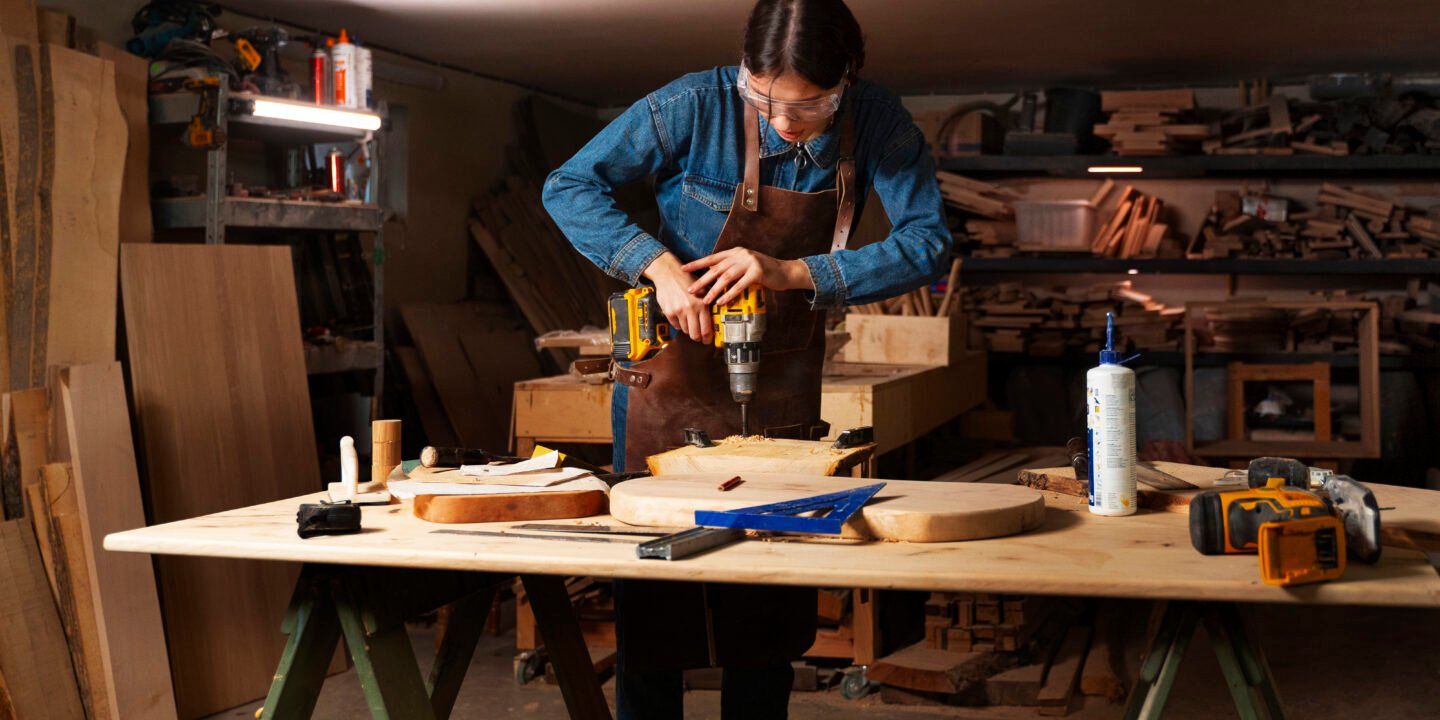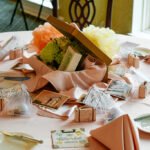
Embarking on DIY home improvement projects can be an incredibly rewarding experience. Not only do you get to enhance your living space, but you also gain valuable skills and a sense of accomplishment. Whether you’re a seasoned DIYer or a beginner looking to try your hand at home improvement, this guide features ten detailed step-by-step tutorials to help you master your skills. From painting walls to building furniture, each project is designed to inspire and empower you to create something beautiful for your home.
1. How to Paint a Room Like a Pro
Overview
Painting is one of the simplest and most effective ways to transform a room. A fresh coat of paint can brighten your space, update outdated colors, and create a more inviting atmosphere.
Step-by-Step Guide
Materials Needed:
- Paint (choose a color and finish)
- Primer (if necessary)
- Paintbrushes and rollers
- Painter’s tape
- Drop cloths
- Ladder
- Paint tray
- Sandpaper
- Spackle (for wall repairs)
Steps:
- Choose Your Color: Pick a paint color that suits your room’s purpose. Test samples on the wall to see how they look at different times of the day.
- Prepare the Room: Move furniture away from the walls and cover it with drop cloths. Lay down drop cloths on the floor to catch any drips.
- Repair Walls: Fill any holes or imperfections with spackle and sand them smooth once dry.
- Tape Edges: Use painter’s tape to mask off edges around windows, doors, and baseboards for clean lines.
- Prime if Necessary: If you’re painting over a dark color or on bare drywall, apply a coat of primer to ensure even coverage.
- Start Painting: Use a brush to paint edges and corners first. Then use a roller for larger areas. Work in sections, blending wet paint into the dry edges.
- Apply Second Coat: After the first coat dries, assess if a second coat is necessary. If so, repeat the painting process.
- Remove Tape: Carefully peel off painter’s tape while the paint is still slightly wet to prevent peeling.
- Clean Up: Wash brushes and rollers, dispose of drop cloths, and return furniture to its original place.
Tips:
- Use high-quality paint for better coverage and durability.
- Opt for low-VOC paint for a healthier indoor environment.
2. Building a Simple Bookshelf
Overview
A bookshelf can be both functional and decorative, showcasing your favorite books and decor items. Building one is a great way to practice woodworking skills.
Step-by-Step Guide
Materials Needed:
- Wooden boards (for shelves and sides)
- Wood screws
- Wood glue
- Sandpaper
- Paint or stain (optional)
- Measuring tape
- Saw
- Drill
Steps:
- Measure and Cut Wood: Decide on the dimensions of your bookshelf. Cut your wooden boards to size: two for the sides, several for the shelves.
- Sand the Edges: Smooth all cut edges and surfaces with sandpaper to prevent splinters.
- Assemble the Frame: Attach the two side pieces to the top and bottom pieces using wood screws and wood glue for added strength.
- Install Shelves: Measure where you want your shelves to go, making sure they’re level. Use brackets or wood screws to secure them.
- Finish the Surface: If desired, apply paint or stain to match your decor. Allow it to dry completely.
- Secure to Wall: If the bookshelf is tall, consider securing it to the wall for safety.
Tips:
- Customize the height and number of shelves to suit your collection.
- Use a level to ensure everything is straight.
3. Creating a Stunning Accent Wall
Overview
An accent wall can add depth and character to any room. This project allows you to play with colors, patterns, or materials like wallpaper or wood.
Step-by-Step Guide
Materials Needed:
- Paint or wallpaper
- Painter’s tape
- Brush or roller (for paint)
- Smoothing tool (for wallpaper)
- Utility knife (for wallpaper)
- Level
Steps:
- Choose Your Wall: Select a wall that you want to accent, preferably one that’s a focal point in the room.
- Choose Your Design: Decide whether you’ll paint, use wallpaper, or create a wood panel look.
- Prepare the Wall: Remove any nails or hooks and patch up holes. Clean the surface thoroughly.
- Tape Edges: Use painter’s tape to mask off edges around doors, windows, and trim.
- Apply Paint or Wallpaper:
- For Paint: Use a brush to paint edges and a roller for large areas. Apply a second coat if needed.
- For Wallpaper: Measure and cut the wallpaper strips. Apply adhesive (if needed) and use a smoothing tool to remove air bubbles.
- Remove Tape: Remove painter’s tape while the paint is still wet or carefully peel off the wallpaper edges.
- Add Finishing Touches: Decorate the wall with art, shelves, or other decor items.
Tips:
- Use bold colors or patterns to make a statement.
- Test paint or wallpaper samples before committing to a design.
4. Installing a Backsplash in Your Kitchen
Overview
A kitchen backsplash not only protects your walls from splashes but also enhances the overall aesthetic. Installing one is a manageable DIY project that can elevate your kitchen.
Step-by-Step Guide
Materials Needed:
- Backsplash tiles (ceramic, glass, or peel-and-stick)
- Tile adhesive (if needed)
- Grout
- Tile cutter (if needed)
- Notched trowel
- Sponge
- Level
Steps:
- Choose Your Tiles: Select tiles that complement your kitchen design.
- Prepare the Surface: Clean the wall thoroughly and make sure it’s dry. Remove any old adhesive or paint.
- Measure and Plan: Measure the area to be covered and plan your layout. Mark vertical and horizontal lines to ensure your tiles are straight.
- Apply Adhesive: Use a notched trowel to spread adhesive on the wall. Start at the bottom and work your way up.
- Place Tiles: Begin placing your tiles, pressing them into the adhesive. Use spacers for even gaps.
- Cut Tiles as Needed: Use a tile cutter for edges and corners to ensure a proper fit.
- Grout the Tiles: Once the adhesive dries, remove spacers and apply grout with a sponge, filling in the gaps.
- Clean Excess Grout: Use a damp sponge to clean any excess grout from the surface of the tiles.
- Seal Grout: Once the grout has cured, apply a sealer for durability.
Tips:
- Consider peel-and-stick options for a quicker, less messy project.
- Choose a grout color that complements your tiles for a cohesive look.
5. Building a Garden Planter Box
Overview
A garden planter box can enhance your outdoor space while providing a beautiful home for your plants. This project is perfect for both seasoned gardeners and novices.
Step-by-Step Guide
Materials Needed:
- Wooden boards (cedar or untreated wood)
- Wood screws
- Drill
- Saw
- Sandpaper
- Wood stain or sealant (optional)
- Landscape fabric (optional)
Steps:
- Measure and Cut Wood: Decide on the size of your planter box and cut your wooden boards accordingly.
- Sand the Edges: Smooth all surfaces with sandpaper to avoid splinters.
- Assemble the Box: Attach the boards together using wood screws to create a box shape. Reinforce corners for stability.
- Add Drainage Holes: Drill holes in the bottom for drainage to prevent water buildup.
- Optional – Line the Inside: Use landscape fabric to line the inside of the box. This helps retain soil while allowing water to drain.
- Finish the Surface: If desired, apply wood stain or sealant to protect the wood from the elements.
- Fill with Soil and Plant: Add potting soil and your choice of plants or flowers.
Tips:
- Consider building a trellis on one side for climbing plants.
- Use recycled wood for an eco-friendly option.
6. Creating a Custom Home Office Space
Overview
In today’s world, having a dedicated workspace at home is essential. Creating a custom home office allows you to work efficiently and comfortably.
Step-by-Step Guide
Materials Needed:
- Desk (store-bought or DIY)
- Chair
- Shelving units or cabinets
- Desk organizer
- Decorative items
Steps:
- Choose Your Location: Find a quiet area in your home with good lighting.
- Select Your Desk and Chair: Pick a desk and chair that are comfortable and fit your style.
- Add Storage Solutions: Incorporate shelving units or cabinets to keep your workspace organized.
- Organize Your Desk: Use desk organizers for pens, papers, and other essentials.
- Personalize Your Space: Decorate with plants, art, or personal items to make the space feel welcoming.
- Ensure Good Lighting: Use task lighting or natural light to reduce eye strain.
Tips:
- Choose calming colors for a productive atmosphere.
- Keep cables organized with clips or a cable management box.
7. Installing New Light Fixtures
Overview
Updating light fixtures can dramatically change the look and feel of a room. Whether you’re replacing old fixtures or installing new ones, this DIY project is straightforward.
Step-by-Step Guide
Materials Needed:
- New light fixture
- Screwdriver
- Voltage tester
- Wire nuts
- Ladder
Steps:
- Turn Off Power: Before starting, turn off the power at the circuit breaker to ensure safety.
- Remove Old Fixture: Carefully unscrew and detach the old light fixture from the ceiling.
- Test for Voltage: Use a voltage tester to ensure the wires are not live.
- Connect Wires: Connect the new fixture’s wires to the existing wires (usually black to black, white to white, and green or copper to ground).
- Secure the Fixture: Attach the new fixture to the ceiling according to the manufacturer’s instructions.
- Restore Power: Turn the power back on at the circuit breaker and test the new fixture.
Tips:
- Choose LED bulbs for energy efficiency.
- Consider adding a dimmer switch for adjustable lighting.
8. Creating a Cozy Fire Pit
Overview
A fire pit can be the perfect addition to your backyard, providing a warm gathering spot for family and friends. This DIY project can be completed in a weekend.
Step-by-Step Guide
Materials Needed:
- Fire pit kit (or stone/brick)
- Gravel
- Sand
- Level
- Shovel
Steps:
- Choose a Location: Select a safe, flat area away from structures, trees, and flammable materials.
- Mark the Area: Use stakes or a rope to outline the desired size of your fire pit.
- Excavate the Area: Dig out the marked area to a depth of about 6 inches.
- Add Gravel and Sand: Fill the bottom with gravel for drainage, then add a layer of sand for leveling.
- Construct the Fire Pit: If using a fire pit kit, follow the instructions to assemble. If using stones, stack them in a circular shape.
- Finish the Surrounding Area: Add seating around the fire pit using chairs or built-in benches.
Tips:
- Use fire-rated bricks or stones for safety.
- Consider adding a metal fire pit bowl for added durability.
9. Installing Shelving in a Closet
Overview
Maximize your closet space by installing custom shelving. This DIY project can help you stay organized and make the most of every inch.
Step-by-Step Guide
Materials Needed:
- Wooden boards (for shelves)
- Brackets
- Screws
- Level
- Drill
- Measuring tape
Steps:
- Measure Your Space: Determine the size of your shelves based on the closet dimensions.
- Choose Your Shelving Material: Select sturdy wood for your shelves.
- Mark the Wall: Use a level to mark where the brackets will go. Ensure they’re evenly spaced.
- Install Brackets: Attach the brackets to the wall using screws, making sure they’re level.
- Cut Shelves to Size: Cut your wooden boards to fit between the brackets.
- Place the Shelves: Lay the boards on the brackets and secure them if necessary.
Tips:
- Consider adjustable shelving for versatility.
- Use decorative baskets or boxes to keep items organized.
10. Creating a DIY Home Gym
Overview
With the right setup, you can create a home gym that suits your fitness goals. This DIY project allows you to customize your workout space.
Step-by-Step Guide
Materials Needed:
- Exercise equipment (weights, mats, etc.)
- Storage solutions (shelves, bins)
- Mirror (optional)
- Decor items (plants, artwork)
Steps:
- Choose Your Space: Find a dedicated area in your home, such as a basement, spare room, or garage.
- Select Equipment: Determine what fitness equipment you’ll need based on your workout preferences.
- Organize Your Space: Use shelves or bins to store smaller equipment and keep the area tidy.
- Add a Mirror: Consider installing a mirror to monitor your form while exercising.
- Personalize Your Gym: Decorate the space with motivational quotes, plants, or artwork to create an inspiring environment.
Tips:
- Ensure good ventilation and lighting in your workout space.
- Consider a sound system for music to keep you motivated.
Final Thoughts
Embarking on DIY home improvement projects can be an enriching experience, allowing you to create a space that reflects your style and needs. Each of the ten tutorials presented here offers a straightforward approach to various projects, empowering you to take on home improvements with confidence. Remember, the key to successful DIY is preparation, patience, and a willingness to learn. So gather your materials, follow these steps, and transform your home into a space you love! Happy DIYing!








